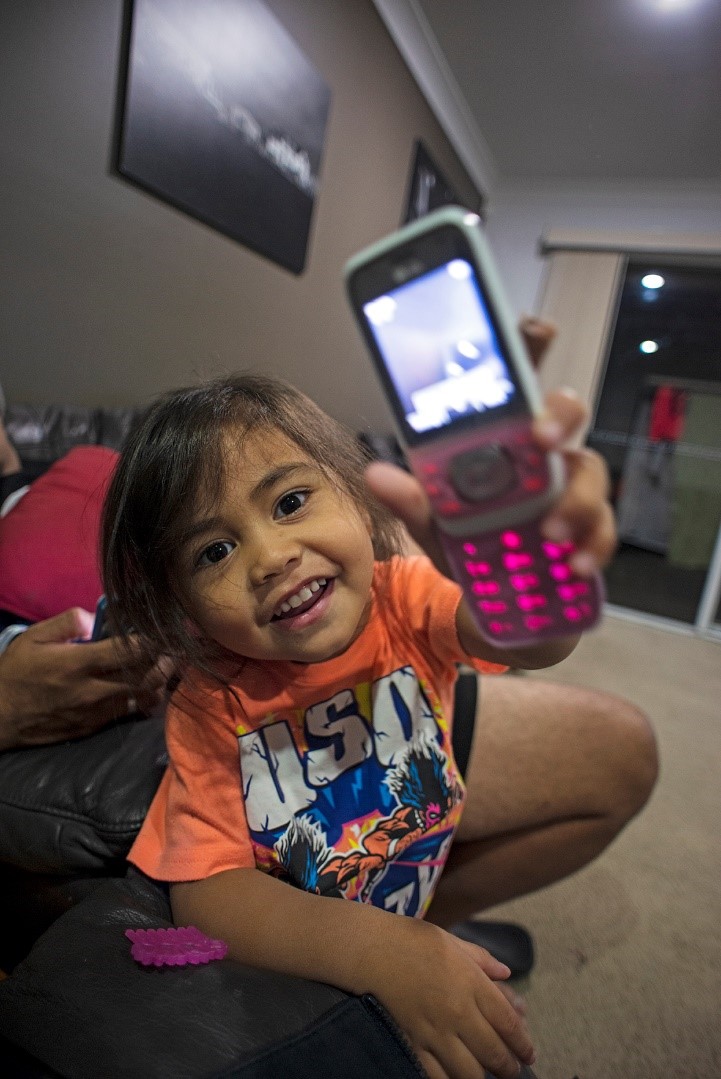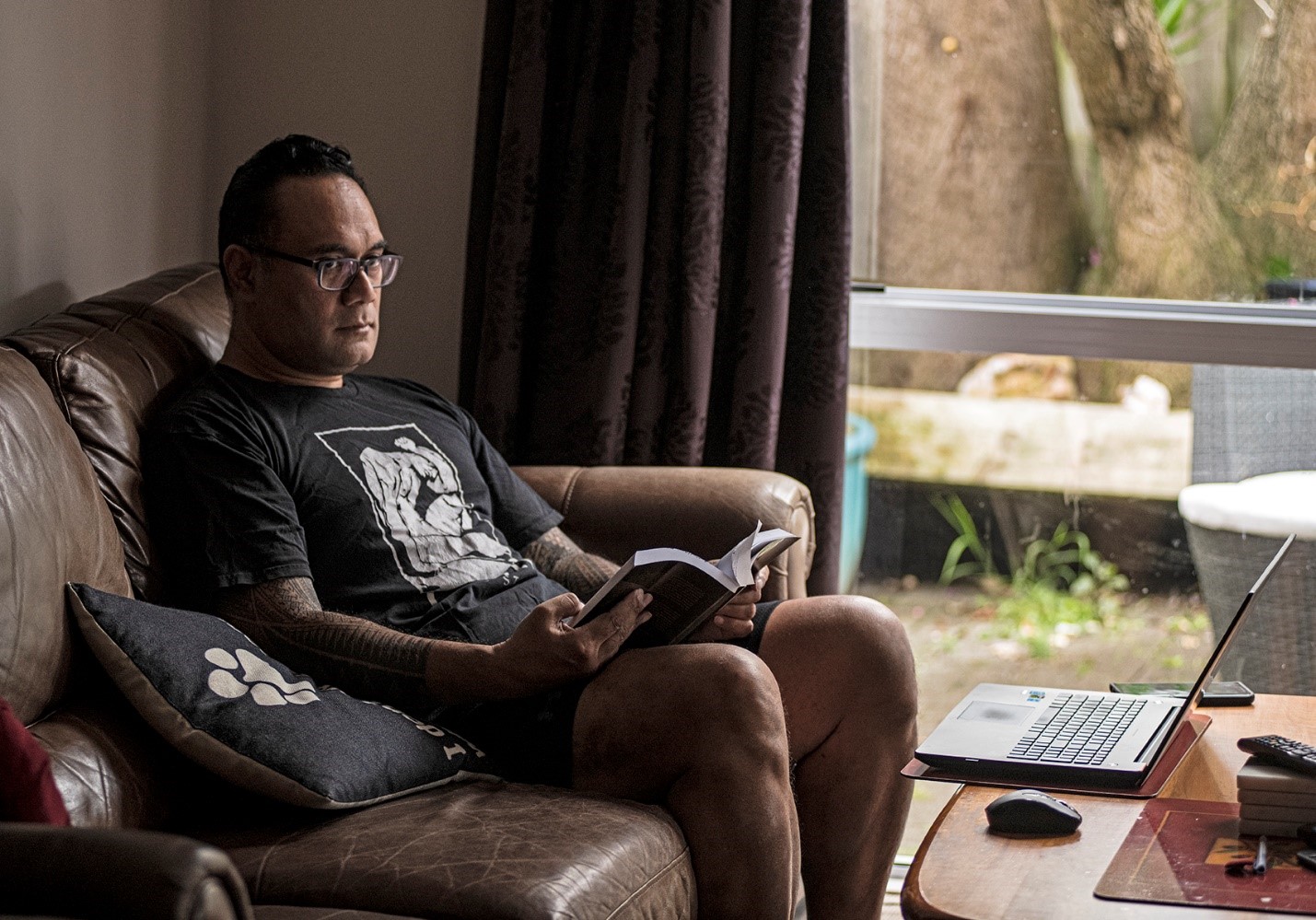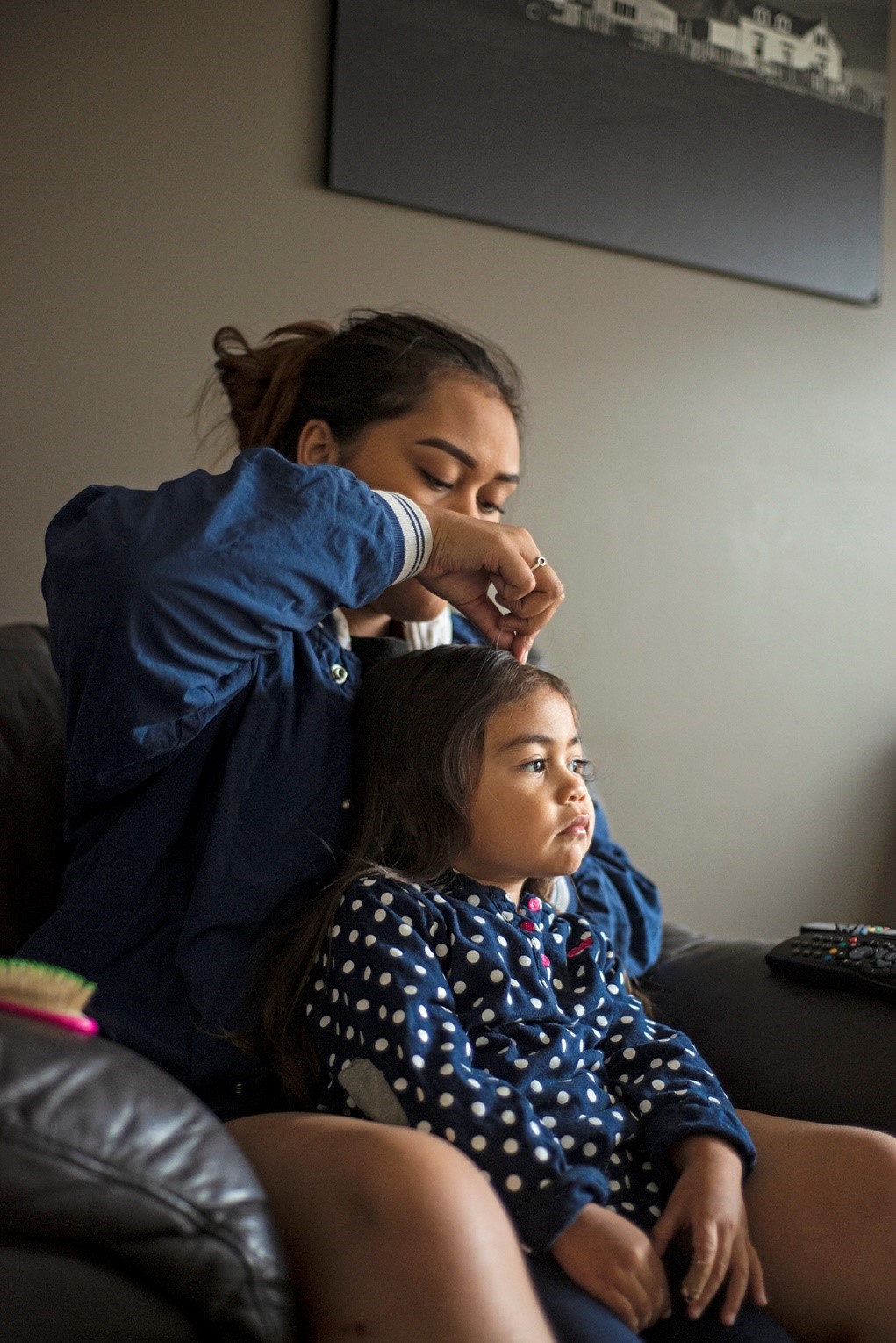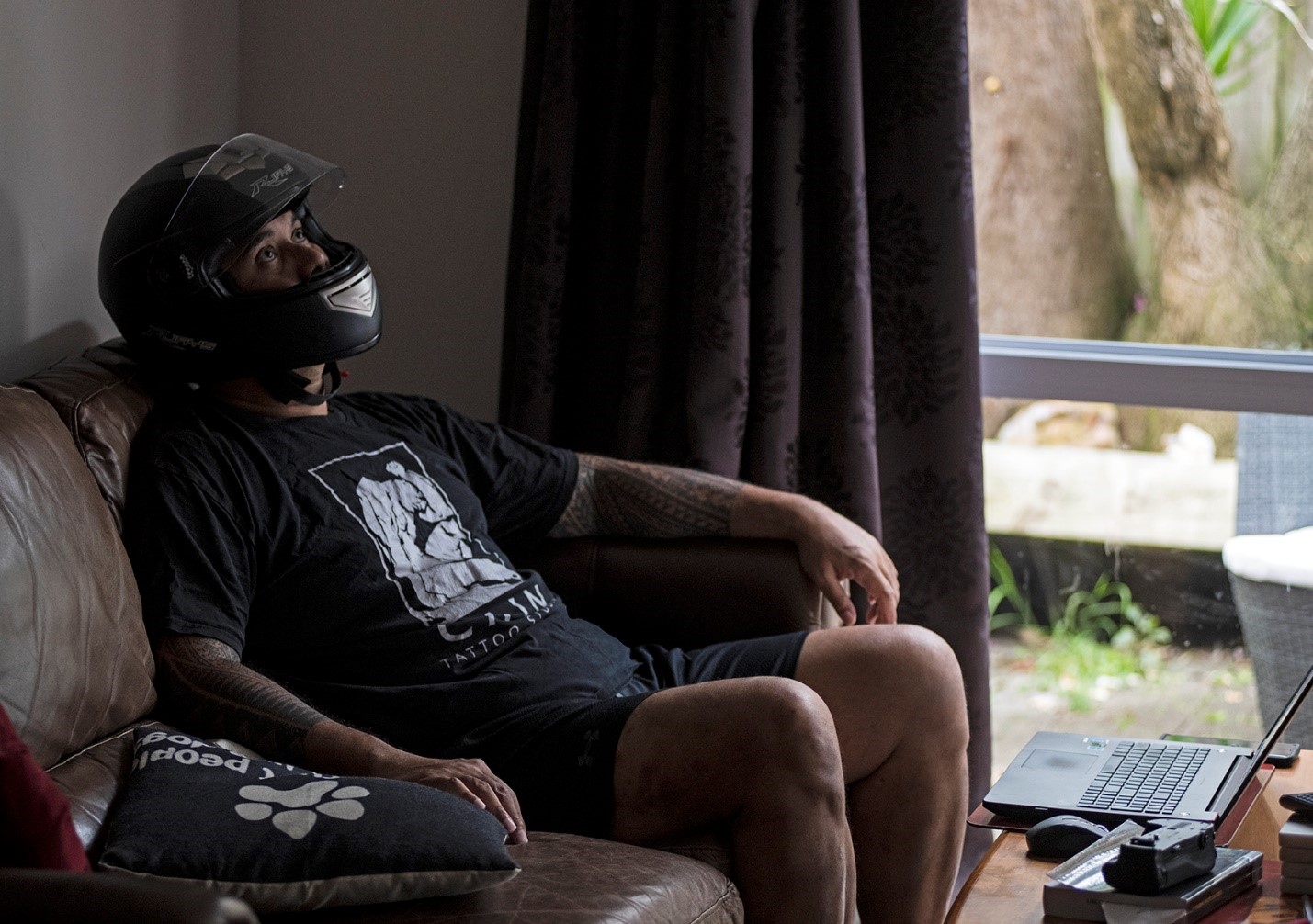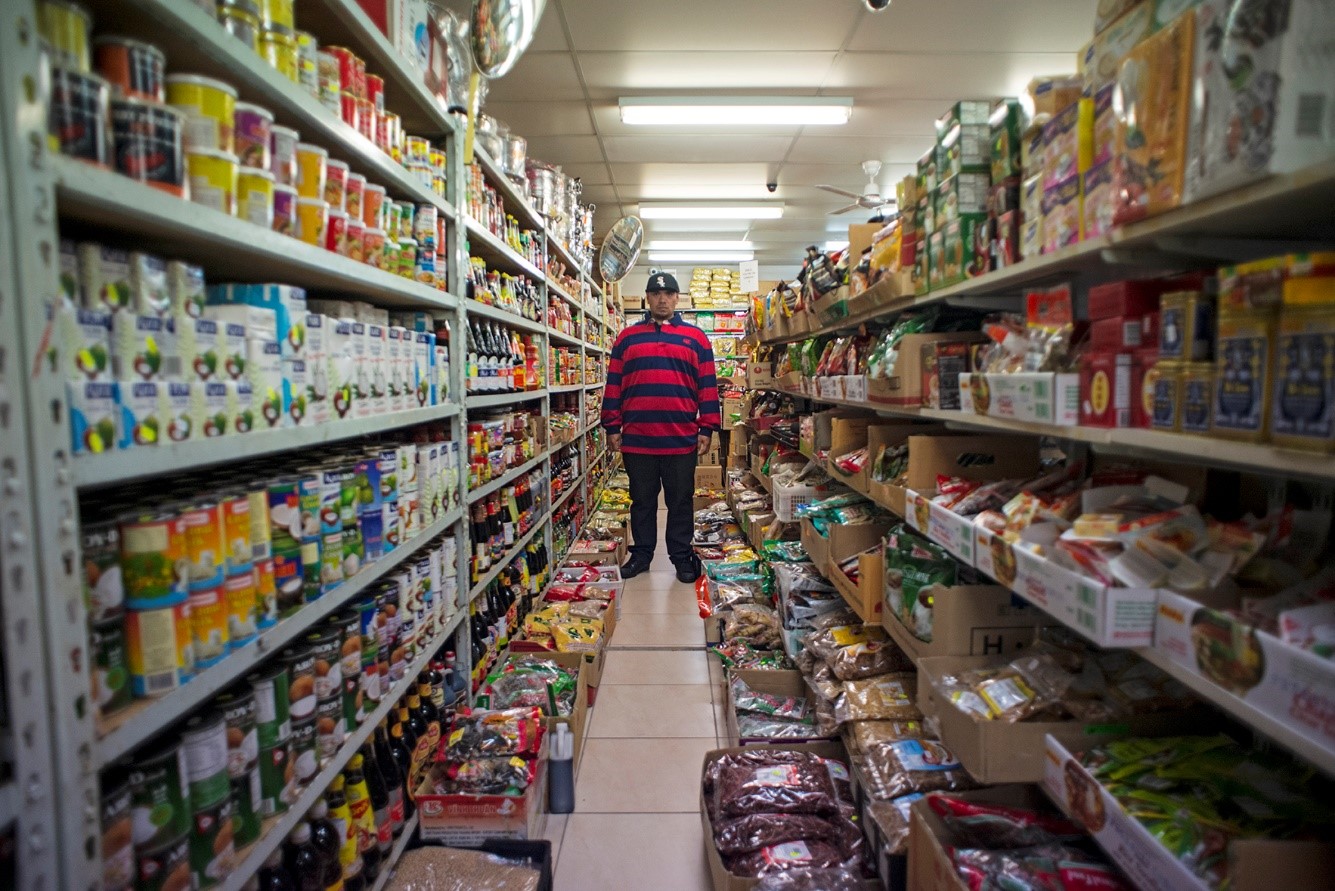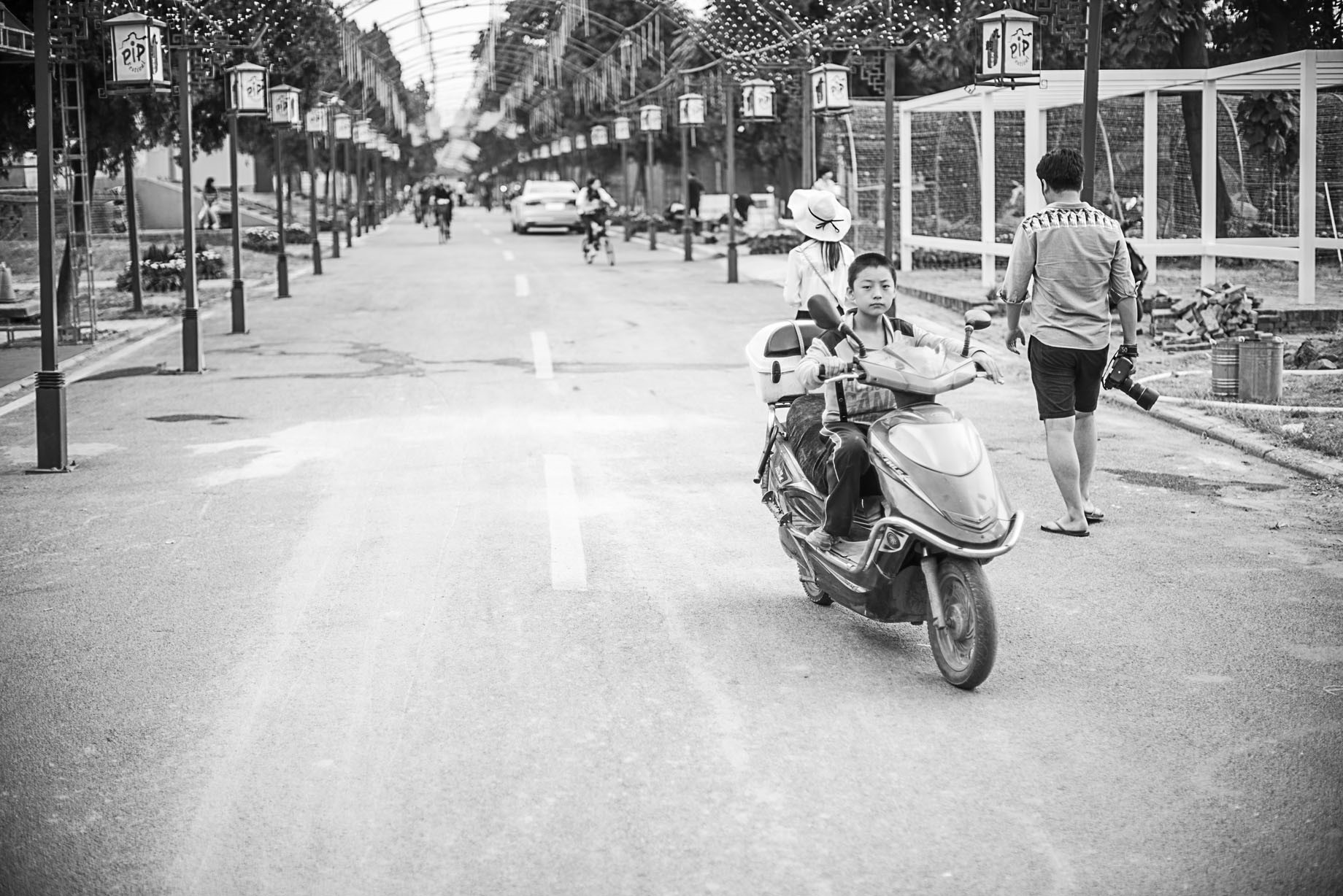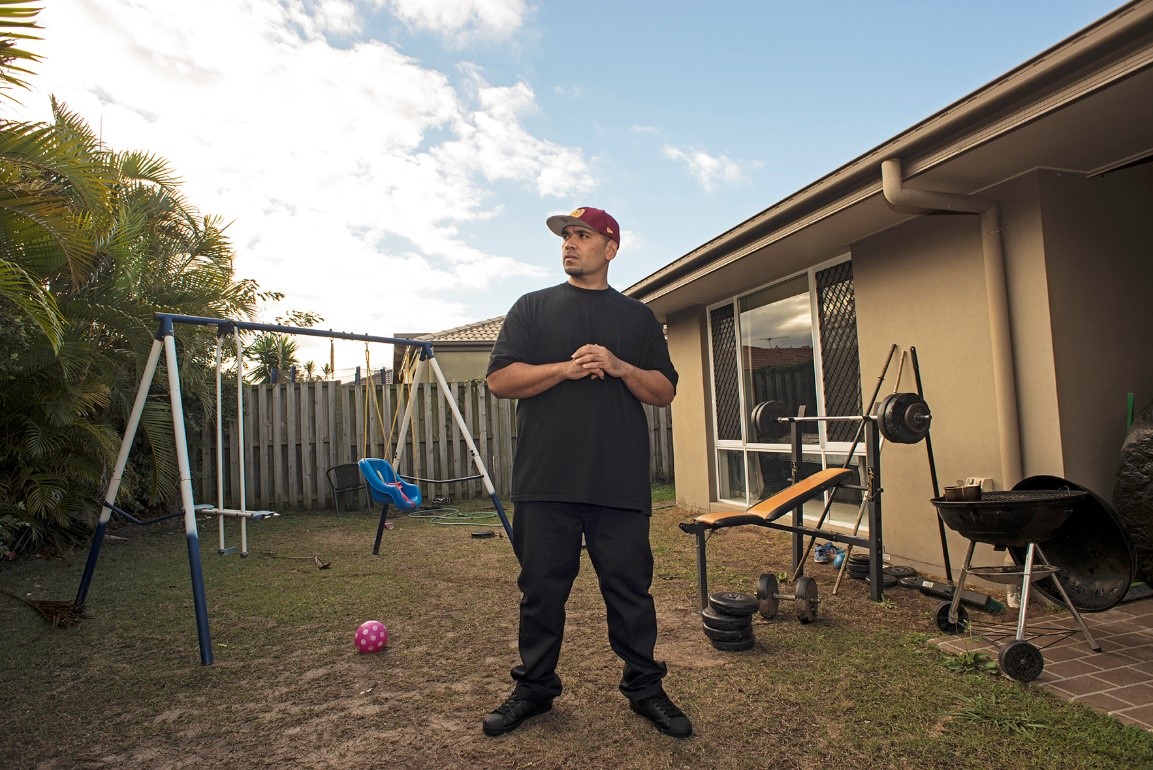Talofa lava, kia ora and hello.
My name is Raymond Sagapolutele, I am an artist and use my camera as my main medium or method to tell stories. In this article, I’m going to share some photography pointers that I use in my own work. These are not hard-and-fast rules, but are intended as starting points – for photographers of all ages and experience levels – to try so to get more comfortable as an artist-photographer. By all means, break these if you feel this will help you tell your story or to hold a memory.
My models and assistants in this article are my awesome family. I spent some time with them a year ago at their home and, while I was there, photographed them with their permission. During the COVID-19 lockdown, many of us spent a lot of time at home. Even when at home, we have the opportunity for artistic exploration. Your camera doesn’t have to be anything fancy and, for many of us, if we have a phone we have a camera, like Nassi shown here in this photograph.
